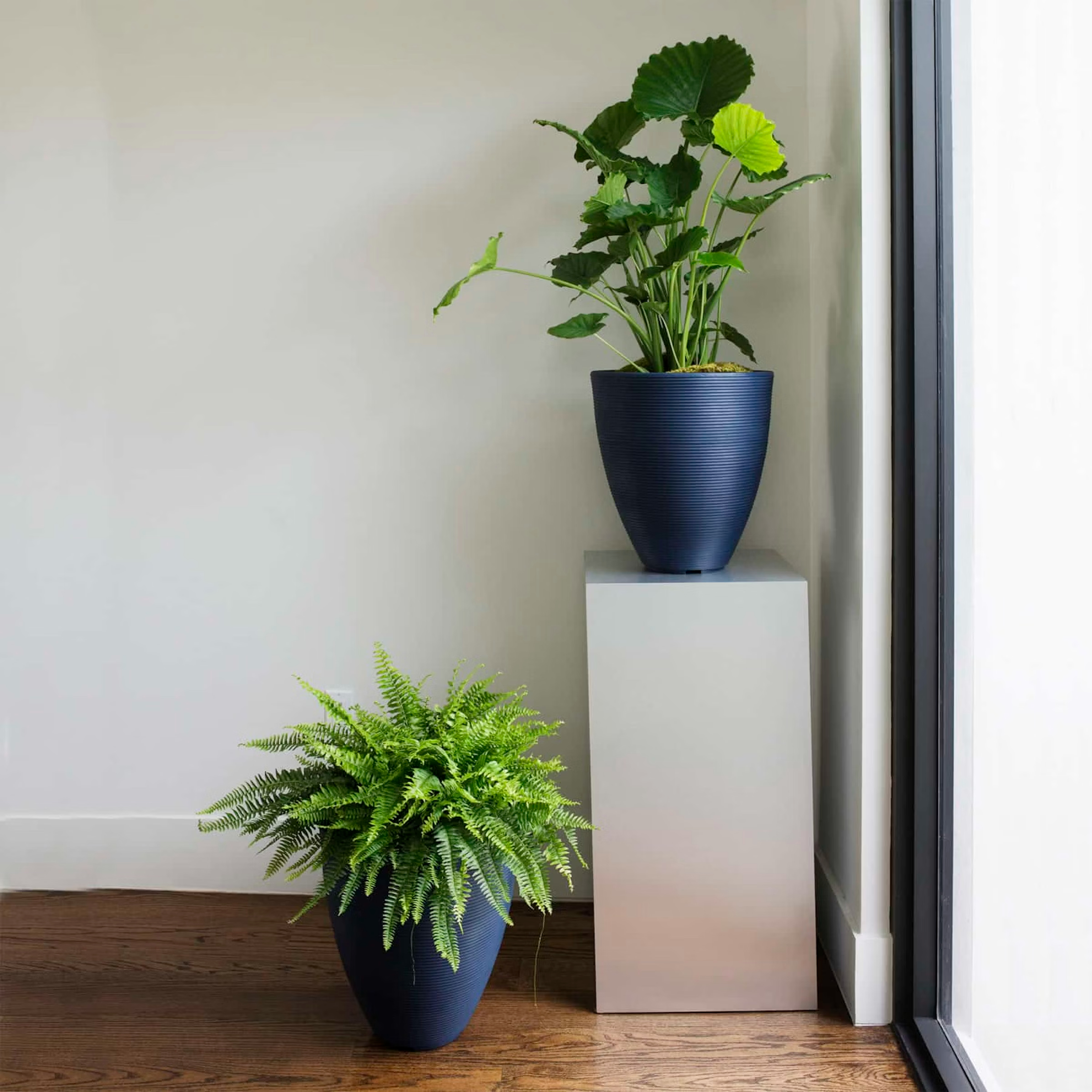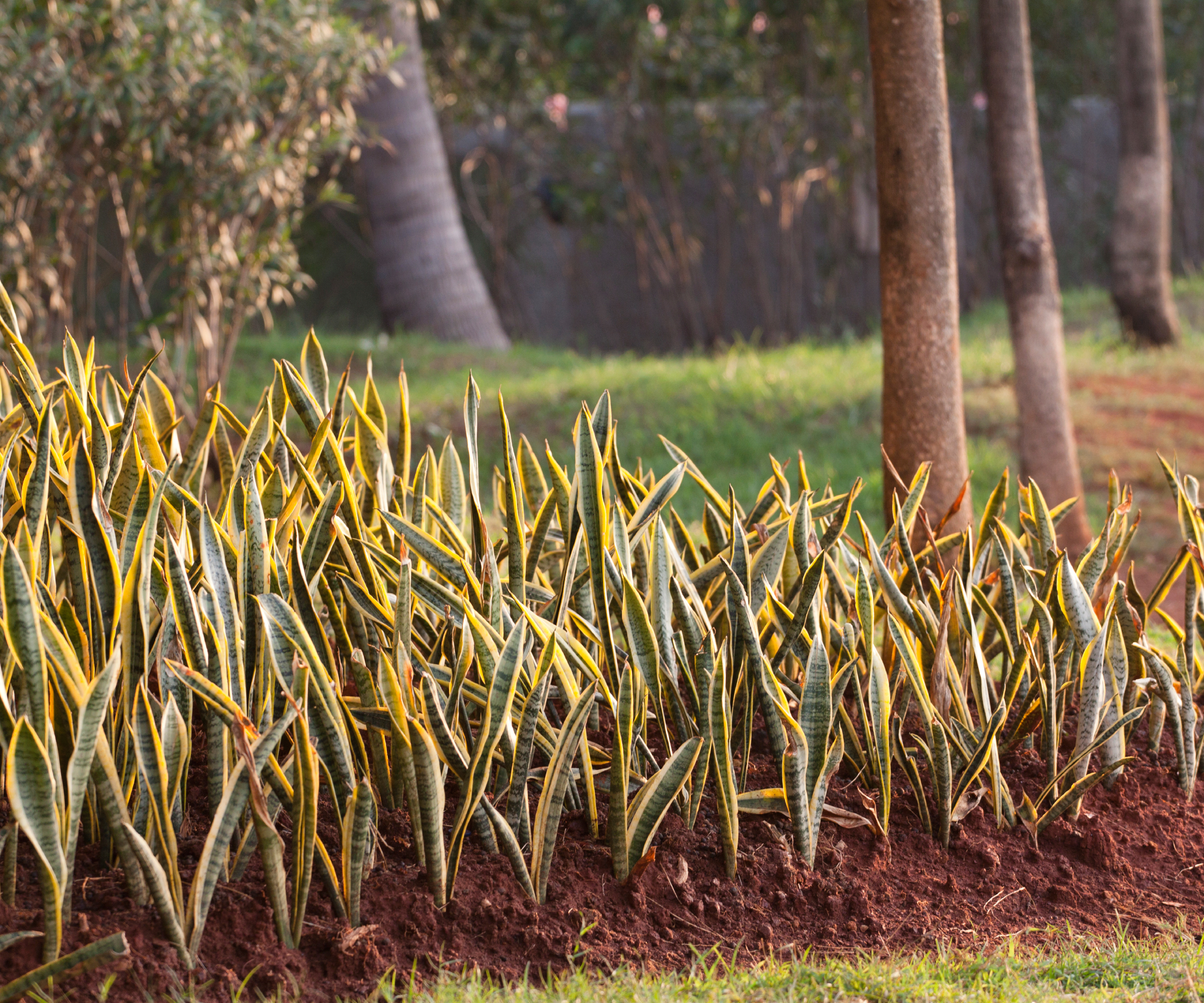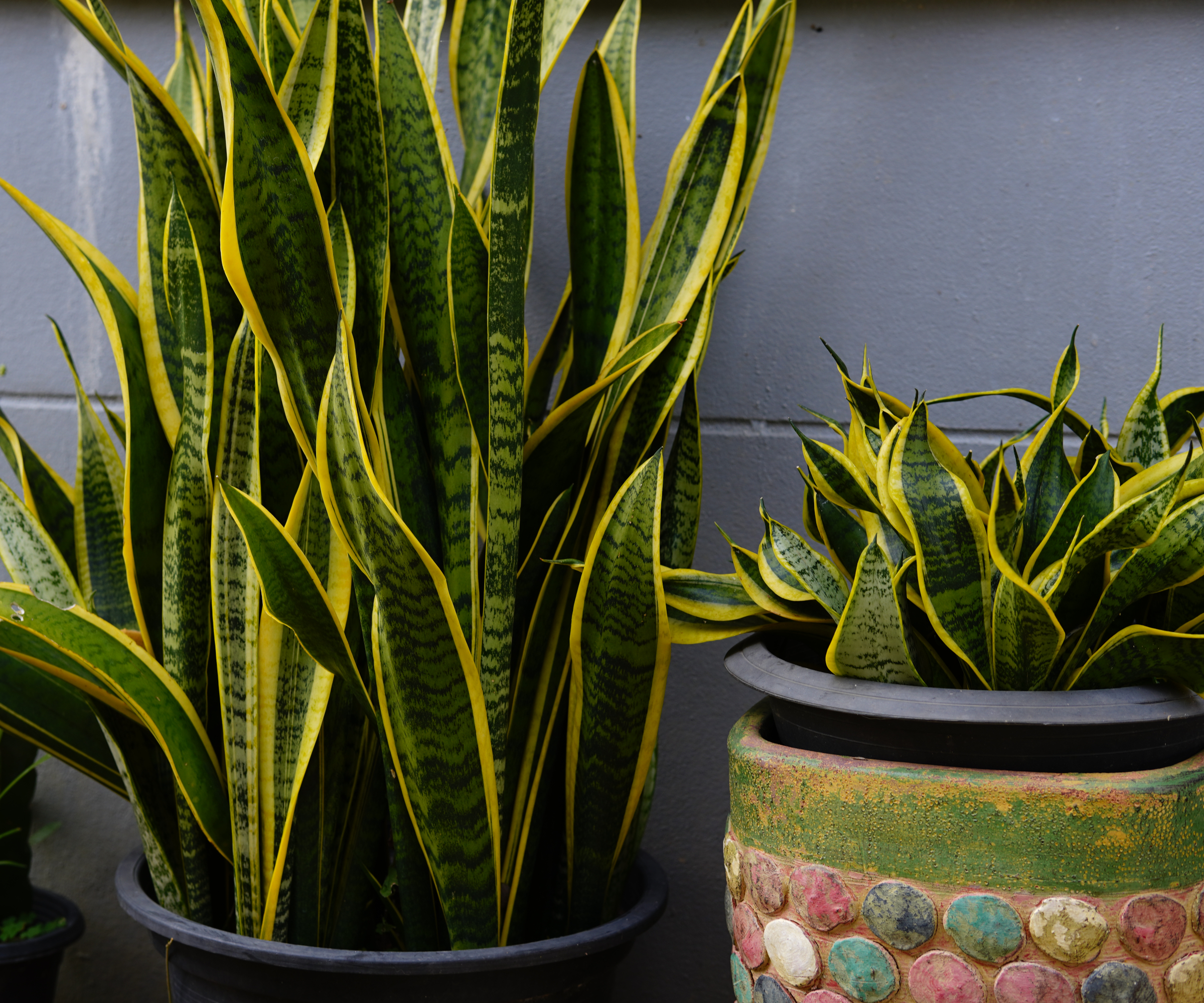Can Snake Plants Live Outside? Everything You Need To Know For Snake Plants Al Fresco
Snake plants can live outside given the right conditions, but be careful that they don't take over! Learn the best way to use snake plants in your landscape.


Snake plant, which is also known as mother-in-law plant or mother-in-law’s tongue, is a common and popular houseplant. It is a tropical evergreen perennial known for being easy to care for, tolerant of low light and able to survive neglect.
Although snake plants come in many different varieties, they generally have long, narrow, lance-like leaves with striking variegated coloring. It’s a popular houseplant, but if the conditions are right, you may be able to grow a snake plant outside.

The perfect indoor and outdoor planter features a classic shape and innovative double-walled design. Find in the Gardening Know How Shop.
Can Snake Plants Live Outside?
If you enjoy this striking plant inside, you might be wondering if you can grow it outside, too. The tall, upright leaves of snake plant make excellent elements on patios and in beds next to plants with different textures and colors. Surely, they can grow outside in summer in most places, but do snake plants grow in winter outdoors?
Unfortunately, the answer is no for most gardens. Snake plant is only hardy in North America in USDA zones 10 and higher. This includes South Florida, extreme South Texas, and a handful of areas in Arizona and southern California. If your garden is in the right zone, you can grow snake plants outside year-round.
If you live in a colder climate outside of snake plant’s hardiness zones, consider moving it outside in summer. Transition it slowly outdoors to avoid shocking the plant. Put it in shade for a few hours, increasing the time outside each day over the course of a couple of weeks.
Before growing outdoor snake plants in one of these warm regions, it’s important to understand that it’s not a native plant. Because snake plants are so tough and long-lived, it has the potential to be invasive. It is difficult to get rid of snake plants once they have taken hold in your garden. If you want to grow it outside, keep it from spreading and consider growing it only in containers.

Temperature and Humidity Requirements
Snake plant is native to tropical regions of West Africa, which means it evolved to grow in warm, humid conditions. Snake plant temperatures inside or outside should ideally be between 65 and 85 degrees Fahrenheit (18 to 29 Celsius). Outside temperatures should not get lower than 55 degrees (13 Celsius) for very long.
Sign up for the Gardening Know How newsletter today and receive a free copy of our e-book "How to Grow Delicious Tomatoes".
While a snake plant appreciates humidity, it doesn’t require a lot of moisture to thrive. The soil should dry out between waterings. It’s easier to overwater snake plants than underwater them. Too much water, poor drainage, and soggy roots can quickly lead to rot.
Light Requirements
Snake plants' ideal light requirement is partial sun, dappled shade, or indirect light. This tolerance for low light conditions is one reason a snake plant is a popular choice for growing indoors. When growing outside, avoid placing it in direct, bright light. A location under a patio or under taller plants is ideal.

Pests
Pests are often more of an issue indoors with snake plants than outdoors. Some of the common pests of indoor snake plants include mealybugs, spider mites, and fungus gnats. Bring plants outdoors for summer and give them a good rinse with water to get rid of pests.
Treat fungus gnats with sticky traps. They don’t harm the plant but are unsightly. Use rubbing alcohol on mealy bugs, and an appropriate insecticide on spider mites.
Frequently Asked Questions
Are Snake Plants Invasive?
Snake plants can be considered invasive in some warmer parts of North America. Check with your county’s extension office to find out if it is invasive in your area.
Do Snake Plants Grow Better Inside or Outside?
If the conditions are right, snake plants can grow very easily indoors or outside. The most important factors are warmth, not overwatering, and avoiding bright, direct light.
More Snake Plant Ideas
- Only have a little bit of space, but want a new snake plant? Our plant experts swear by these 6 small snake plant varieties to sneak a little textural interest into any space.
- Learn how to propagate snake plants for endless fun! Snake plants can be divided or propagated in water or soil from cuttings.
- Water your snake plants and other houseplants with ease with the Cleo houseplant watering can and sprayer set in the Gardening Know How Shop.
- Interested in learning more about designing your garden? Try our free Outdoor Spaces Mini-Course on the Gardening Know How Learning Channel.
- Get more tips, tricks, advice and product recommendations delivered straight to your inbox when you sign up for the free Gardening Know How Newsletter.
This article features products available from third-party vendors in the Gardening Know How Shop.

Mary Ellen Ellis has been gardening for over 20 years. With degrees in Chemistry and Biology, Mary Ellen's specialties are flowers, native plants, and herbs.